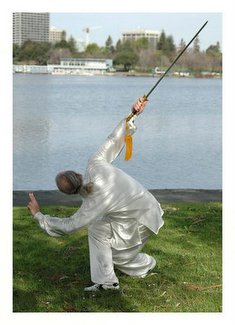Cross posted @ God Is 4 Suckers!
There are only two kinds of people in the world, The Irish and those who wish they were. – Old Irish saying
Being half Irish myself, I find the Sons of Eire a delightful lot. They appreciate a good song, a good toast, a good joke and a good story. Of course, a steady diet of wine, women and song tends to be a little less healthy, but so be it.
It’s a big holiday in the US, there’s no doubt about it. It seems like many ethnicities get at least one day apiece (some of them even get an entire month), and the Irish are no exception. My preference would be that we call it Shamrock Day, as the notion of ‘saints’ becomes ever more anachronistic with the passing of time.
So who was this ‘Saint Patrick’?
Saint Patrick (Latin: Sanctus Patricius, Irish: Naomh Pádraig) (c. 387 – 17 March, 493) was a Romanized-Celt, a Romano-Briton and Christian missionary, who is the most generally recognised patron saint of Ireland (although Brigid of Kildare and Colmcille are also formally patron saints).
Two authentic letters from him survive, from which come the only universally accepted details of his life. When he was about 16 he was captured from Britain by Irish raiders and taken as a slave to Ireland, where he lived for six years before escaping and returning to his family. After entering the Church, he returned to Ireland as an ordained bishop in the north and west of the island, but little is known about the places where he worked.
By the eighth century he had come to be revered as the patron saint of Ireland. The Irish monastery system evolved after the time of Patrick and the Irish church did not develop the diocesan model that Patrick and the other early missionaries had tried to establish.
Most available details of his life are from later hagiographies from the seventh century onwards, and these are not now accepted without detailed criticism. Uncritical acceptance of the Annals of Ulster would imply that he lived from 340 to 440, and ministered in what is modern day northern Ireland from 428 onwards. The dates of Patrick's life cannot be fixed with certainty, but on a widespread interpretation he was active as a missionary in Ireland during the second half of the fifth century.Saint Patrick's Day (17 March) is celebrated both in and outside of Ireland, as both a liturgical and non-liturgical holiday. In the dioceses of Ireland it is a both a solemnity and a holy day of obligation and outside of Ireland, it can be a celebration of Ireland itself.
Most of what little is known has been pieced together, but here we can cut straight to the blarney, lads and lasses:
Pious legend credits Patrick with banishing snakes from the island, though all evidence suggests that post-glacial Ireland never had snakes; one suggestion is that snakes referred to the serpent symbolism of the Druids of that time and place, as shown for instance on coins minted in Gaul (see Carnutes), or that it could have referred to beliefs such as Pelagianism, symbolised as “serpents”. Legend also credits Patrick with teaching the Irish about the concept of the Trinity by showing people the shamrock, a 3-leaved clover, using it to highlight the Christian belief of 'three divine persons in the one God' (as opposed to the Arian belief that was popular in Patrick's time)
Methinks me spies a wee bit of a yarn there.
Some Irish legends involve the Oilliphéist, the Caoránach, and the Copóg Phádraig. During his evangelizing journey back to Ireland from his parent's home at Birdoswald, he is understood to have carried with him an ash wood walking stick or staff. He thrust this stick into the ground wherever he was evangelizing and at the place now known as Aspatria (ash of Patrick) the message of the dogma took so long to get through to the people there that the stick had taken root by the time he was ready to move on.
It took him no small turn of the clock to finally sell his snake-oil, no doubt. There’s more, but we Irish are a long-winded lot and enjoy makin’ a story where none is needed (for an example of this, ask the price of a vegetable from a grocer anywhere in Eire, and you’ll likely be regaled with a long history of that particular legume’s lineage). If you take the time to study pagan Irish mythology, you’ll find a huge diversity equal to any evolutionary tree.
Anywhoways, have a happy Shamrock day, and do drink green beer responsibly.
'Go mbeire muid beo ar an am seo arís.' (May we be alive at this time next year.)
Sláinte!














No comments:
Post a Comment